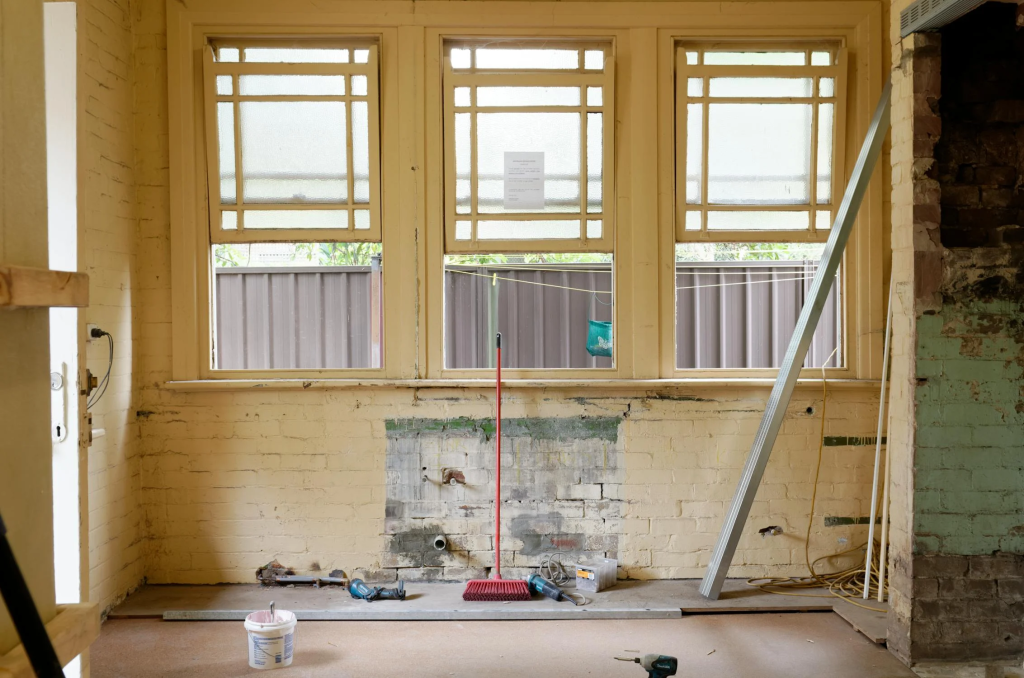When considering a home update, two words often come up: remodelling and renovation. While many use these terms interchangeably, they refer to distinct processes. Understanding the difference between remodelling and renovation is crucial, as it affects planning, budgeting, and even the expertise required for the job.

Whether you’re looking to refresh your bathroom, expand a kitchen, or completely transform your living space, knowing the difference between these two can help you decide which approach is best suited for your goals.
In this article, we’ll explore the key differences between remodelling and renovation, when to choose one over the other, and how to plan each process effectively.
What Is The Difference Between Remodelling And Renovation?
Renovation and remodelling might seem similar, but they differ significantly in terms of scope, cost, and purpose.
- Renovation generally refers to restoring something to a good state of repair. The goal of a renovation is to update a room or home to its original condition or to refresh the look without altering the layout. Renovations might involve repairing walls, repainting surfaces, refacing cabinets, and replacing outdated fixtures or flooring. The focus is on making the space look fresh and updated without changing its core structure or layout.
- Remodeling, on the other hand, involves altering the structure or function of a space. In a remodel, you’re changing the room’s design or layout in a significant way, which might mean tearing down walls, changing plumbing lines, or installing new structural elements. Remodeling is more intensive and often requires permits and professional expertise in fields like engineering, electrical work, and design. For example, converting a basement into a guest suite or combining two rooms into one open-concept living area would be considered remodelling.
The distinction between remodelling and renovation is essential because it impacts both cost and complexity. Renovations are typically quicker and more cost-effective than remodels, which demand more substantial changes and, therefore, a larger budget and timeframe.
When determining whether to remodel or renovate, consider your ultimate goal and the amount of time and money you are willing to invest.
When To Choose Renovation Over Remodeling
Deciding between renovation and remodelling depends largely on your objectives and budget. Here are a few scenarios where renovation might be the better choice:
- Refreshing Outdated Aesthetics: If your primary goal is to give a room a new look without changing its structure, a renovation might be sufficient. This can include updating cabinets, countertops, or flooring to modernise the space without altering its basic configuration.
- Fixing Minor Issues: Renovations work well for minor repairs and upgrades, such as fixing cracked tiles, repainting, or updating old plumbing fixtures. It’s a practical solution for those wanting to enhance their home’s appearance and value without a full-scale redesign.
- Preserving Original Character: If you’re interested in maintaining the original character of your home—especially if it’s an older property with unique architectural features—renovation is the way to go. Renovations allow you to keep the charm and historical value of your property while improving its functionality and appearance.
- Budget Constraints: Renovations generally cost less than remodels. If you’re working with a limited budget, you may get more mileage out of a renovation by focusing on smaller, impactful upgrades rather than an extensive remodel. Renovations like painting, lighting updates, or installing new hardware are relatively affordable yet can drastically change the look of a space.
Choosing a renovation over a remodel allows you to make noticeable improvements without extensive work. However, if your goal is to change the functionality of a space or to reconfigure the layout, remodelling may be a more appropriate choice.
When Remodeling Is The Right Choice
Remodeling is a significant undertaking and is often chosen when homeowners need or want to alter a room’s layout, size, or function. Here’s when remodelling might be the better option:
- Changing the Layout or Structure: Remodelling is the best approach if you need a layout change, such as turning a closed kitchen into an open-concept space. This can involve moving walls, rerouting plumbing, and updating electrical systems, which require professional expertise and possibly permits.
- Increasing Home Value: Major remodels, such as kitchen or bathroom overhauls, can significantly increase a home’s value. Remodeling often offers a high return on investment (ROI) when selling, especially if the home is in a high-demand real estate market. Expanding a master suite or updating an outdated kitchen layout to create an open flow can make the home more appealing to future buyers.
- Addressing Functional Needs: Families often remodel to address new functional needs, like adding an extra bedroom or bathroom or converting a basement to a home office. Remodeling makes it possible to adapt the home’s layout to fit changing needs, such as accommodating growing children, creating space for home-based work, or adding accessibility features.
- Correcting Structural Issues: Older homes may have structural issues, such as a deteriorating foundation or walls that don’t meet modern building codes. In these cases, remodelling is essential to bring the home up to standard, ensure safety, and prevent further damage.
Because of its complexity, remodelling typically requires more planning, permits, and budget than renovation. Hiring contractors, consulting with architects, and securing building permits are common steps in a remodelling process, especially when making major changes.
Planning Your Renovation or Remodel
Whether you decide to remodel or renovate, planning is key to a successful project. Here are some tips to guide your planning process:
- Set a Clear Budget: Begin by establishing a realistic budget that includes all potential costs, from materials and labour to permits and unforeseen expenses. Renovations typically cost less than remodels, so set your expectations accordingly.
- Define Your Goals: Be clear about your objectives from the start. Are you looking to increase functionality, update aesthetics, or both? A detailed plan will guide you and help your contractor understand your vision. This will also help in choosing the right materials, style, and design elements.
- Create a Timeline: Renovations are generally quicker than remodels, which can last several weeks or even months, depending on the scale of the project. Work with your contractor to establish a realistic timeline, accounting for factors like weather, contractor availability, and supply chains.
- Hire Professionals When Necessary: For complex remodels, working with professionals such as architects, interior designers, and licensed contractors is essential. Not only can they help bring your vision to life, but they also ensure the work meets building codes and safety standards. For renovations, you may not always need an architect, but hiring skilled tradespeople can still improve the quality and durability of the results.
- Obtain Necessary Permits: Certain types of work, especially remodelling, require permits to comply with local building codes. Failure to get proper permits can lead to delays and fines. Check with your local authority or your contractor about which permits may be necessary for your project.
- Prioritize Your Projects: If your budget doesn’t allow for a complete transformation, prioritize rooms that will bring the most value, functionality, or enjoyment. Many homeowners start with kitchens and bathrooms, as these spaces are essential and have high returns on investment when done well.
Proper planning makes the difference between a smooth project and a stressful experience. By laying out clear goals, budgets, and timelines, you’ll make the renovation or remodelling process much easier.
Conclusion
Understanding the difference between renovation and remodelling helps homeowners make informed decisions about their home improvement projects. Renovation is often more budget-friendly and allows for aesthetic upgrades and minor repairs without altering the room’s structure.
Remodeling, however, offers greater flexibility for structural and functional changes but requires more time, budget, and expertise.
Whether you decide to remodel or renovate, careful planning is essential. Define your goals, budget realistically, and consult with professionals to ensure your vision is achieved safely and effectively.
Both remodelling and renovation have unique benefits, and choosing the right approach for your home can enhance your living space, improve your quality of life, and add significant value to your property.
Are you looking for more information? Look and visit the radiant renovations, today!
